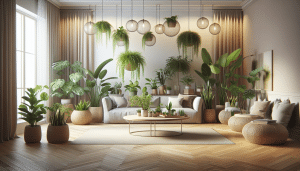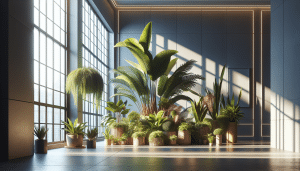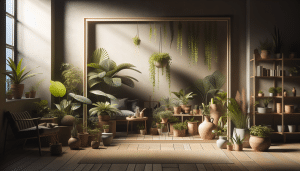Surprising Ways You Can Transform a Small Balcony
Daniel Fisher September 14, 2025
Explore innovative ideas for creating a welcoming, low-maintenance small balcony garden filled with personality. Discover strategies for choosing the right plants, maximizing privacy, using vertical gardening, and designing beautiful relaxation areas in limited spaces.
Why Small Balcony Gardens Are Gaining Popularity
Many city dwellers are discovering the joy of their outdoor spaces by transforming small balconies into peaceful retreats. A balcony garden doesn’t require a huge investment or years of expertise. In fact, even a compact balcony can host a cozy retreat where you sip coffee, grow fresh herbs, and feel at home outdoors. The rise of urban apartment living has only increased the demand for practical small space solutions. People now realize a balcony is much more than a laundry drying spot or a forgotten corner—it’s an extension of daily life, suitable for both gardening and relaxation. With some creativity and understanding of sun exposure, wind, and climate, virtually anyone can create a sanctuary from the concrete jungle.
High-density urban settings often present limits, but these constraints fuel innovation. Small balcony gardens utilize space efficiently, bringing nature closer without the need for expansive yards. Compact container gardens, vertical plant walls, and modular furniture make it possible to integrate greenery—even when floor space is tight. These spaces can also be designed for low maintenance, making them welcoming to both novice gardeners and busy professionals. The satisfaction of growing edible plants or nurturing flowers is accessible to all, regardless of apartment size.
Beyond personal enjoyment, balcony gardens can also increase property value and enhance curb appeal, even in rentals. They visually soften harsh building lines, offer privacy from neighbors, and bring fresh scents and soothing views into everyday routines. As cities encourage greener lifestyles, more people find motivation to create balcony oases, especially with online inspiration just a click away (Source: https://www.epa.gov/green-infrastructure/what-green-infrastructure).
Choosing the Right Plants for Your Balcony Space
Every balcony is unique. Selecting the right plants depends on sunlight, wind patterns, and available space. South-facing balconies usually soak up plenty of sun, perfect for sun-lovers like lavender, petunias, and tomatoes. North-facing spaces are shaded most of the day and better suited for ferns, begonias, or impatiens. Consider wind, too—a higher floor might have strong gusts, favoring low-growing, sturdy varieties or hardy herbs like rosemary. Container gardening makes it simple to mix and match compatible plants while ensuring each gets the light and water it needs.
If you crave color, try compact flowering plants in planters, such as pansies, marigolds, or geraniums. For fresh harvests, choose compact vegetables or culinary herbs. Many city gardeners enjoy growing basil, mint, or chives in small containers. Succulents and cacti are excellent if you prefer little fuss, as they thrive in dry conditions and rarely need watering. Vining plants and dwarf varieties also suit vertical or hanging spaces, maximizing greenery without encroaching on your feet. Whatever your style, focus on species well-matched to your balcony’s conditions for a display that thrives with minimal effort.
Rotating plant groupings throughout the year is a great way to keep the display lively and satisfying. In spring, cool-season flowers can brighten up the space. As summer approaches, swap in heat-lovers for sustained color and texture. Seasonal herbs can refresh your kitchen and your garden at the same time. Experiment and observe what grows best—each small balcony is a custom ecosystem (Source: https://extension.umn.edu/containers-gardening).
Vertical Gardening: Make the Most of Every Inch
Vertical gardening is a clever technique to maximize productivity when horizontal space is limited. Simple wall-mounted planters, pocket planters, and trellises allow for a cascading effect of flowers or trailing herbs. Even a small frame can support a lush, living wall. This approach is popular for both its visual drama and efficient use of available space. It’s also a creative solution for privacy, screening your balcony from neighboring eyes while underscoring your personal style.
Choose fast-growing climbers such as sweet peas, morning glories, or climbing nasturtiums for quick green coverage. Edible options like peas, beans, or strawberries can thrive vertically, doubling as decoration and food source. Wall-affixed fabric pockets can be filled with soil and planted densely, supporting both ornamental and edible plants. This vertical approach transforms a bland urban wall into a living canvas of color, fragrance, and texture. Just remember to secure planters and trellises well, especially on windy balconies, to prevent accidents.
Hanging baskets, repurposed ladders, and old shelving units also serve as creative vertical garden structures. Balconies with strong railings may sport railing planters or hooks for cascading foliage. These solutions aren’t just attractive—they’re also practical, letting you grow more without crowding your main relaxation area. Vertical gardening brings fresh inspiration to city garden design, helping residents explore new ways to experience nature up close (Source: https://www.rhs.org.uk/advice/profile?pid=117).
Privacy Solutions for a Peaceful Retreat
Privacy is a top concern for many balcony gardeners. Even in apartment buildings, you can develop a personal refuge with simple, affordable methods. Bamboo screens, lattices, or trellised plants create soft visual barriers that block unwanted views without sacrificing sunlight. For instant privacy, hang outdoor curtains or roll-up shades. Planting tall grasses, bamboo, or dense shrubs at the perimeter of your balcony adds both beauty and seclusion. Each option can be tailored to suit your style and maintenance preferences.
If you share walls with neighbors, consider tall planters or stacked crates along the edges. These elements break up sightlines and add depth. Choose evergreen plants for year-round coverage or experiment with climbers for a seasonal curtain of green. Recycled pallet walls and modular panels are budget-friendly and allow for flexibility as your needs or tastes change. Sometimes, string lights woven through greenery add a soft glow that turns the balcony into a magical retreat at dusk.
Combine multiple privacy strategies for layered effect and greater visual interest. A mix of living and structural screens creates a lush backdrop that muffles noise and blocks wind. Many of these solutions are renter-friendly and easy to adapt or remove when needed. Creating privacy not only makes outdoor spaces more comfortable but also encourages deeper connection with nature, supporting mental well-being in city environments (Source: https://www.psychologytoday.com/us/basics/nature-therapy).
Furnishing and Decorating Your Balcony for Comfort and Style
Thoughtful furnishing can transform any size balcony into a true extension of your home. Look for foldable chairs, nesting tables, or built-in benches with hidden storage to maximize seating without crowding the space. Outdoor rugs, colorful cushions, and weatherproof textiles introduce a cozy, inviting feel. Multipurpose furniture solutions—such as ottomans that double as storage—bring both function and personality. Pay attention to scale—a few well-chosen pieces often work better than squeezing in many small ones.
Decor is the finishing touch that sets the mood. Lanterns, wind chimes, and solar lights create an ambient evening glow, while potted plants in coordinated colors pull the look together. Bold art prints or wall-mounted mirrors can give the illusion of greater space and reflect greenery for extra impact. For a boho vibe, layer textiles or use repurposed crates as side tables. If you prefer modern lines, opt for sleek metal planters and pared-back furniture profiles.
Don’t forget small personal touches: a favorite mug, a warm throw for chilly evenings, or a collection of shells from travels. These little details add comfort and make your balcony uniquely welcoming. Pets may enjoy the space too—a soft mat, cat grass, or safe plants can transform the balcony into a tiny playground. With imagination and a few updates, anyone can create a lounge worth lingering in (Source: https://www.hgtv.com/outdoors/gardens/garden-styles-and-types/gardening-in-small-spaces).
Low-Maintenance Gardening Tips for Busy Lifestyles
A flourishing balcony garden doesn’t have to be labor-intensive. Choose drought-tolerant species or succulents for minimal watering. Self-watering containers and drip irrigation systems simplify care and reduce plant stress. Slow-release fertilizers help keep plants healthy with less frequent feeding. By grouping plants with similar sunlight and water needs, it’s easy to streamline maintenance routines and prevent common problems. Mulching the surface of planters, even in small spaces, conserves moisture and suppresses weeds.
Consider using lightweight potting mixes and selecting containers with good drainage to prevent root rot. Regularly trim and deadhead flowers to promote continuous blooms. Take advantage of technology by setting calendar reminders for watering or checking soil moisture with a simple sensor. Enlist hardy indoor-outdoor plants when travel or unpredictable schedules make consistent care a challenge. In the right setup, a small green retreat can flourish with only a few minutes of attention each week.
Accepting a bit of imperfection helps create a more forgiving gardening approach. Focus on resilient plant choices, use quality tools, and experiment with automation to ease the workload. Remember, the goal is to foster relaxation, not to add stress. By making smart selections and small regular check-ins, balcony gardens become sustainable joys in a busy lifestyle (Source: https://www.gardeners.com/how-to/gardening-for-beginners/7862.html).
References
1. United States Environmental Protection Agency. (n.d.). What is Green Infrastructure? Retrieved from https://www.epa.gov/green-infrastructure/what-green-infrastructure
2. University of Minnesota Extension. (n.d.). Container Gardening. Retrieved from https://extension.umn.edu/containers-gardening
3. Royal Horticultural Society. (n.d.). Vertical Gardening. Retrieved from https://www.rhs.org.uk/advice/profile?pid=117
4. Psychology Today. (n.d.). Nature Therapy. Retrieved from https://www.psychologytoday.com/us/basics/nature-therapy
5. HGTV. (n.d.). Gardening in Small Spaces. Retrieved from https://www.hgtv.com/outdoors/gardens/garden-styles-and-types/gardening-in-small-spaces
6. Gardener’s Supply Company. (n.d.). Gardening for Beginners. Retrieved from https://www.gardeners.com/how-to/gardening-for-beginners/7862.html








